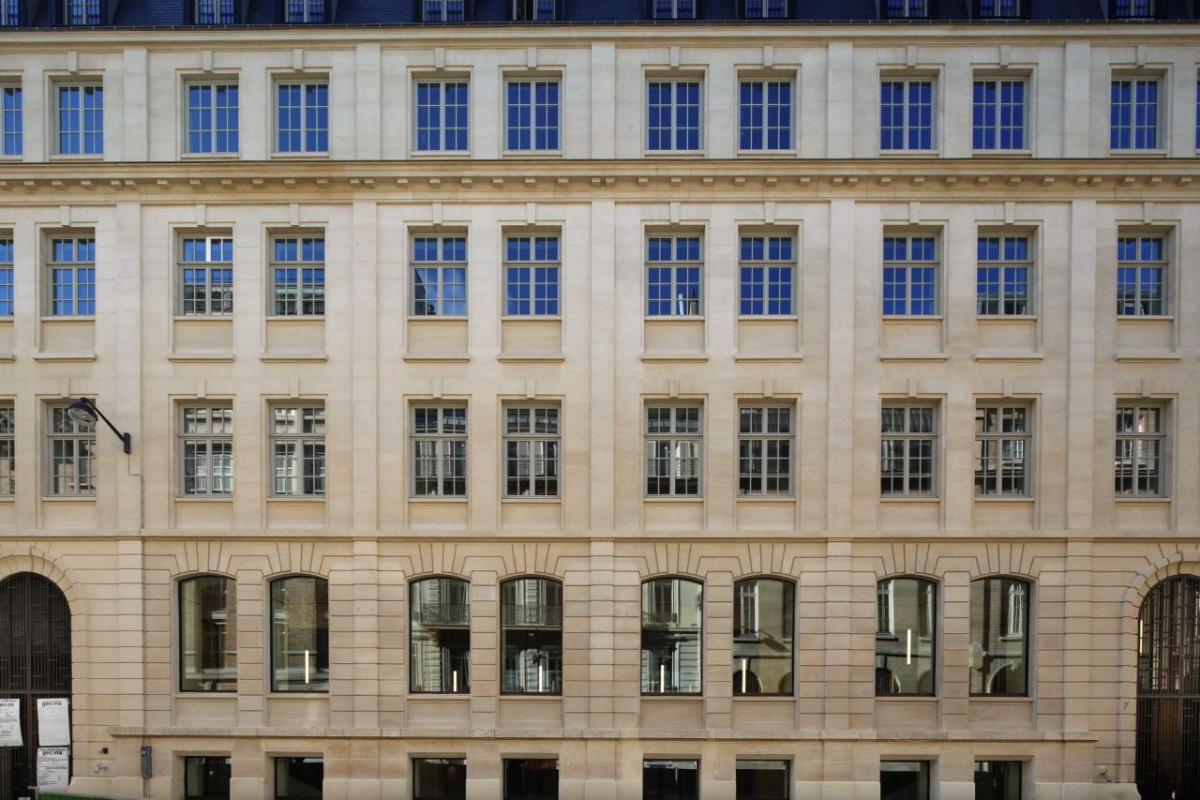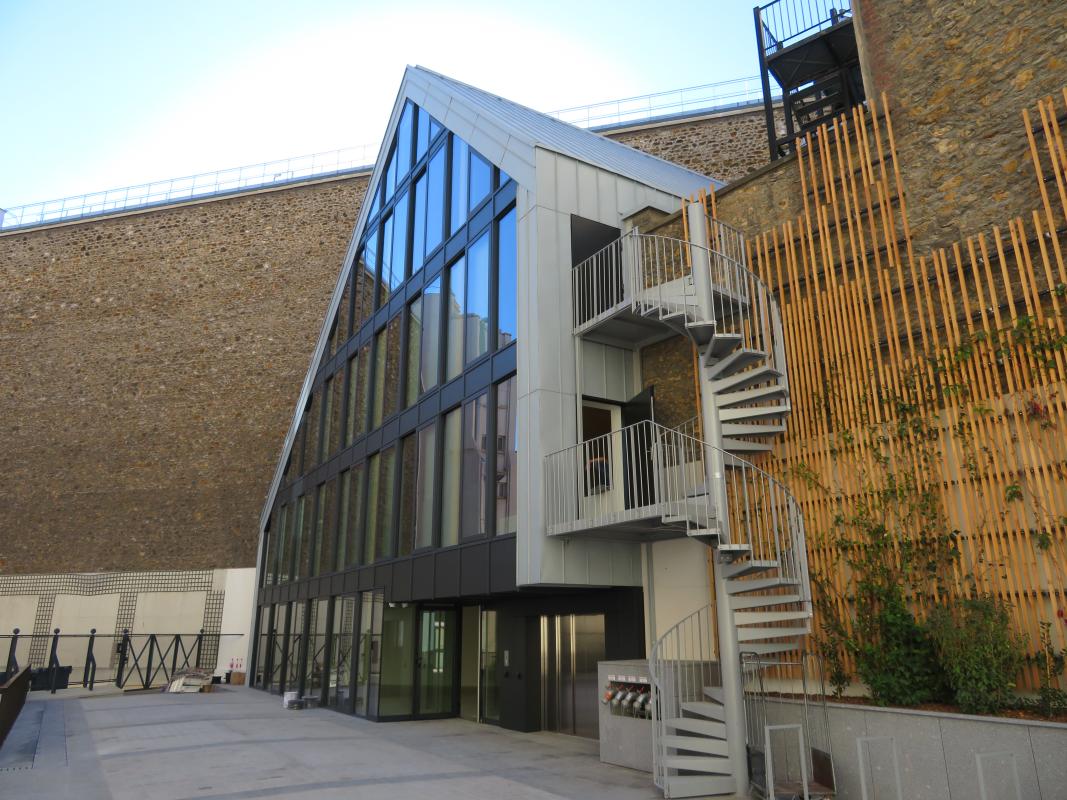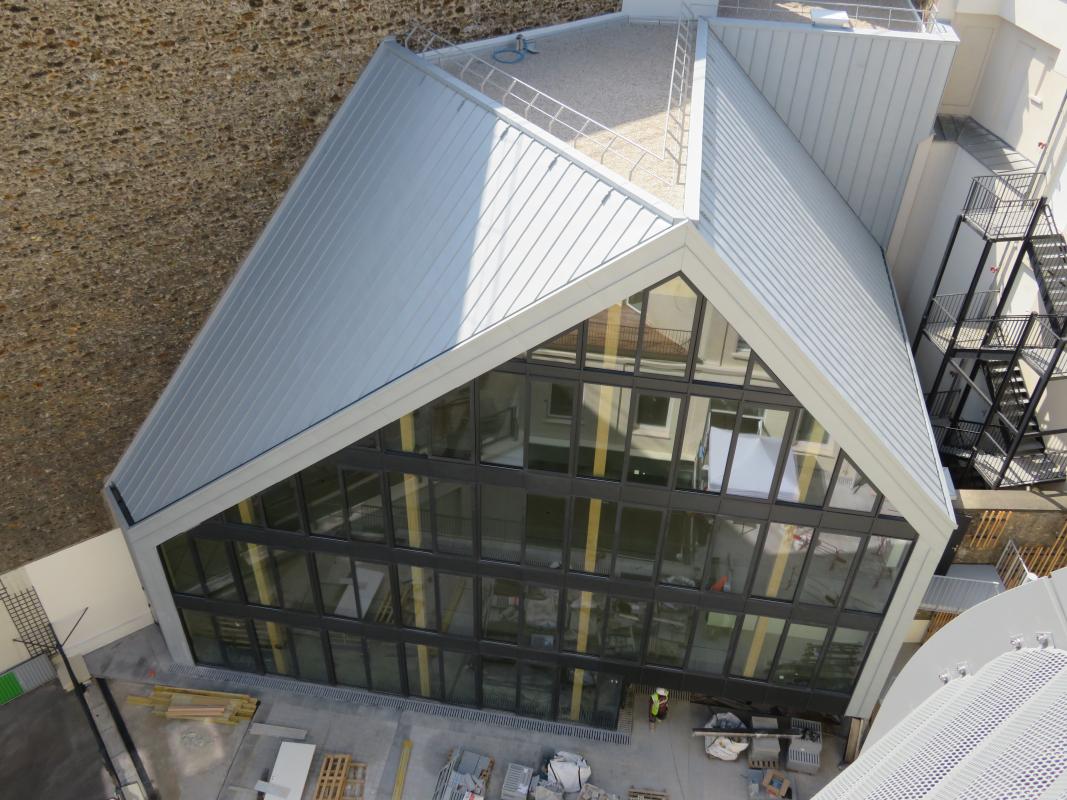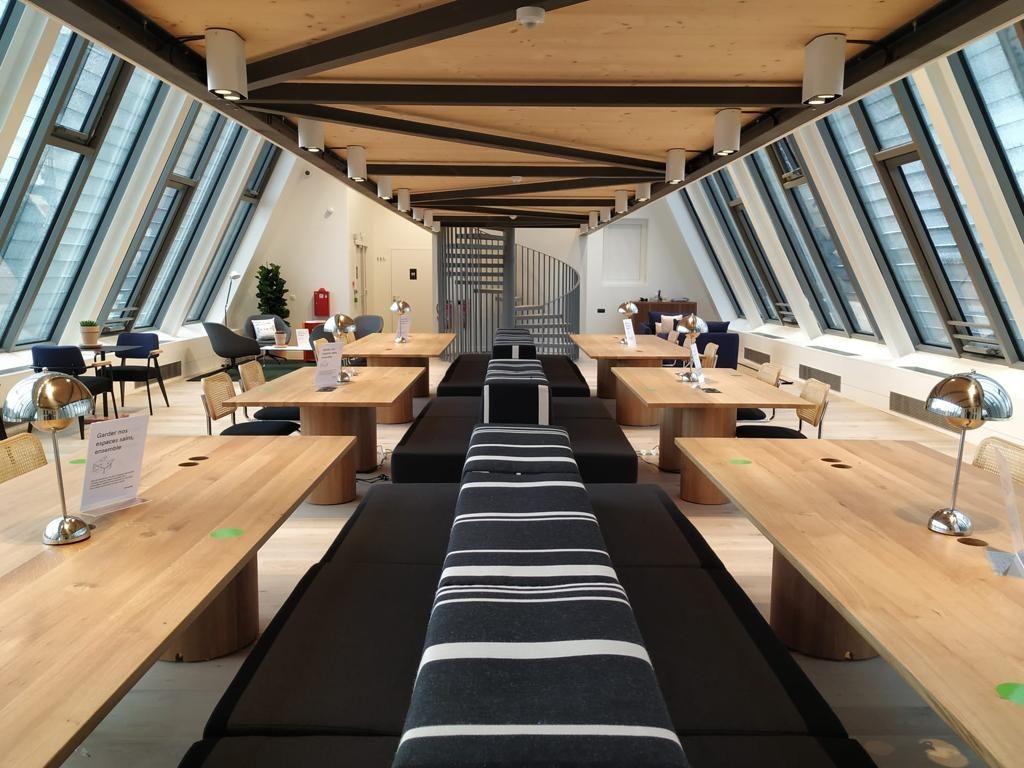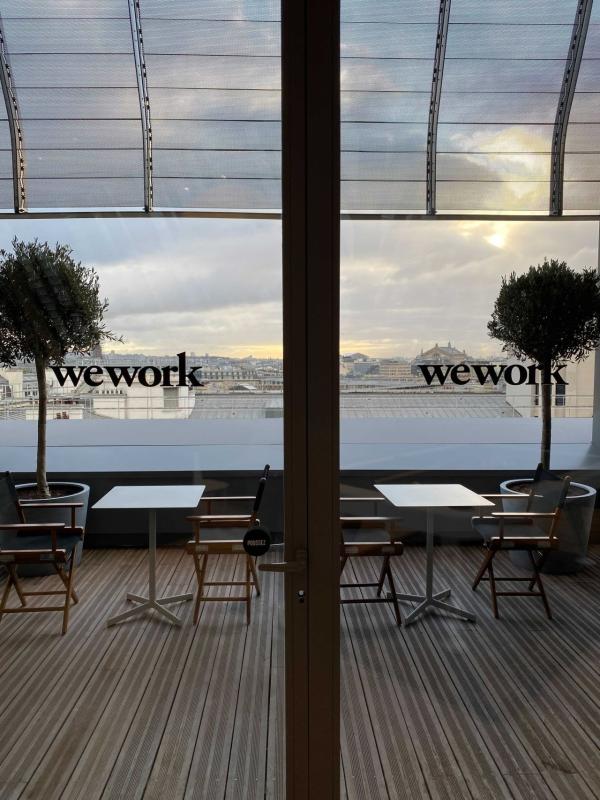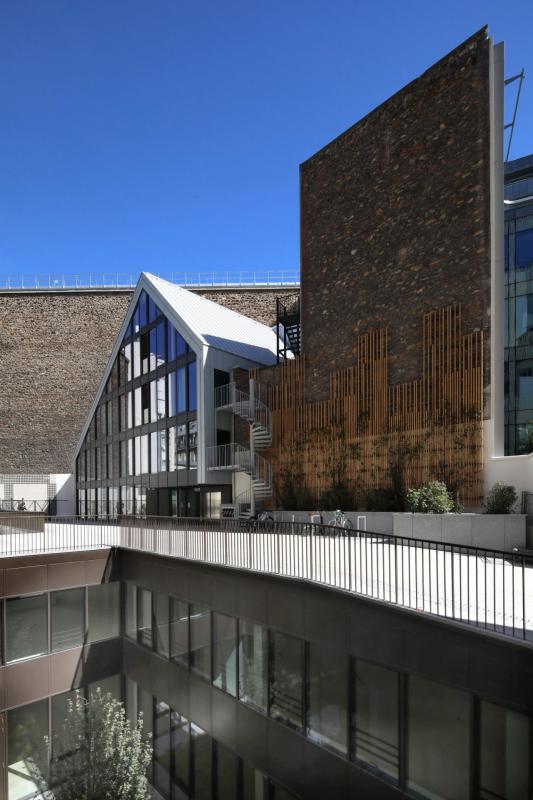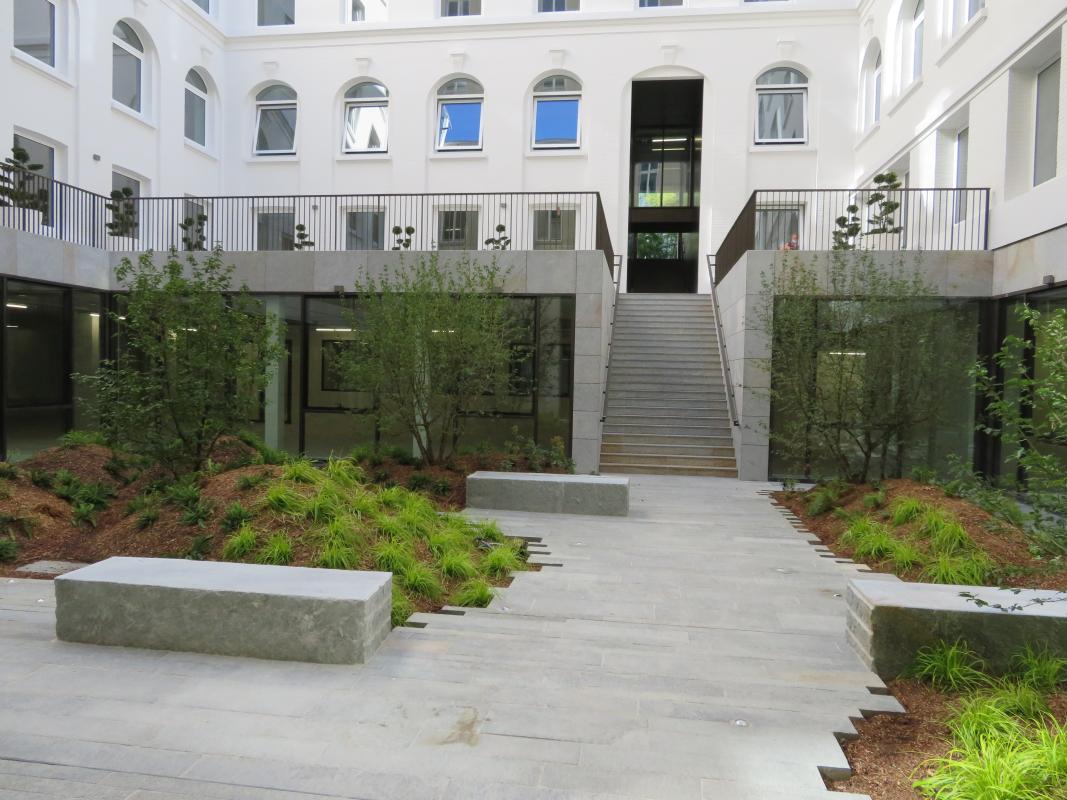7 rue de Madrid
Restructuring of a former Jesuit college into an office and co-working space
The renovation of the project’s facades focused on a meticulous overall restoration, punctuated with occasional more contemporary interventions to meet the demands of new uses and standards for office buildings.
The building had retained the austere, classical character of its original, late 19th-century incarnation as a Jesuit college, unsuited to the image of its new role as an office building. Transforming this constituted one of the principal challenges in the treatment of the facades, in particular on the Rue de Madrid side, opening the ground floor onto the public space and redefining the scale of the building at pedestrian level.
The internal courtyard has been completely redesigned to become the real heart of the project. The existing building has been lowered by a level, allowing for the creation of a sunlit garden in the former basement. The building’s garden level becomes a largely glazed base, providing transparency between the lobby, garden, meeting spaces and services. In the upper floors, the existing brick facade has simply been renovated – pressure-washed and repointed. Particular care was given to the existing windows, which have been replaced by large tilting windows.
On the two upper floors, the treatment of the roof was the other key element in this renovation. The existing slate roof was taken off to reveal the original steel structure, and has been replaced with a more contemporary reinterpretation: a glazed roof with large sloping volumes replaces levels 6 and 7, revealing far-reaching views over Paris. The glass roof incorporates both glazed and opaque fixed elements, flush with the spandrel panels, as well as mechanized top-hung casement windows.
In order to recreate the image of a Parisian rooftop in zinc, as well as providing efficient solar protection, a mesh of perforated aluminum slats lies over the glass roof. In daylight you can see through it, and at night, lit from inside, its transparency is revealed.
This sunscreen is made of slats of sheet aluminum, folded and 50% perforated, held between two steel plates to form a support frame. The slats are arranged so as to create a double skin of scales. This mesh offers two advantages: it helps the project to blend into the Parisian rooftops around it, and as a sunscreen it makes the interior spaces both comfortable and environmentally efficient.
The windows have all been replaced with more energy-efficient and contemporary models, preserving the same proportions and dimensions in order to protect the original image of the building. On the Rue de Madrid and north courtyard, they are made in wood, with integrated cross-pieces. Throughout the rest of the building, the large, tilting windows are made in aluminum, enabling larger dimensions.


